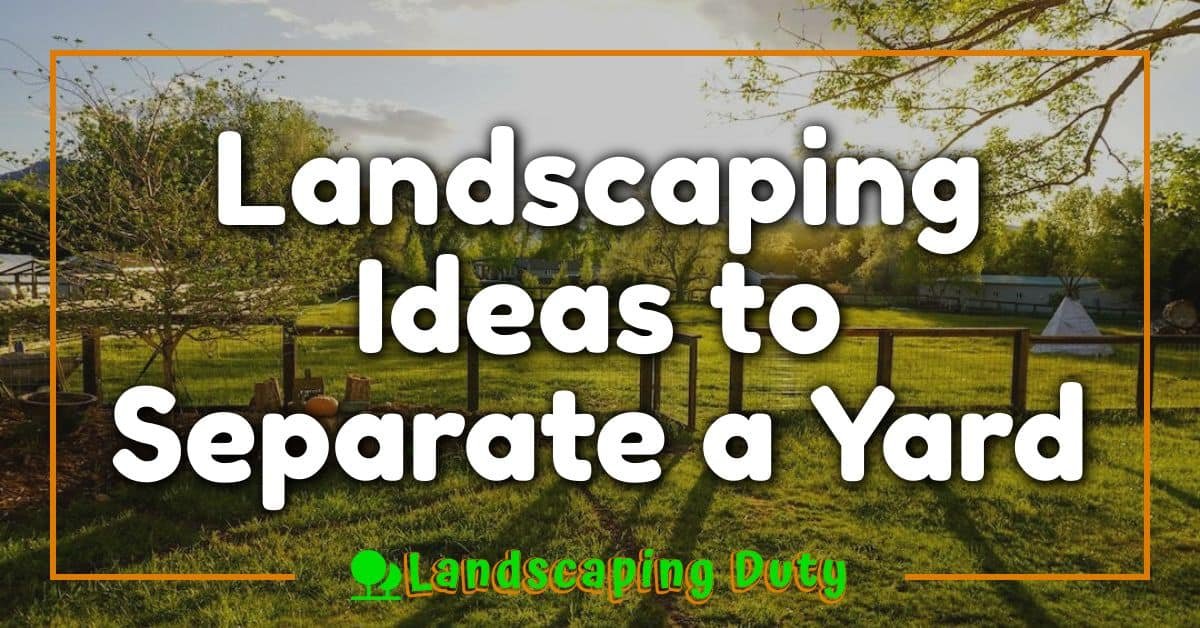If you’re looking to add beauty and character to your outdoor space, landscaping stones are a great option. Not only do they add visual interest, but they can also help prevent erosion and provide a durable surface for walking paths or patios. With a little DIY know-how, you can easily install landscaping stones to transform your yard.

Before you get started, it’s important to plan your landscape design. Consider the size and shape of the area you want to cover, as well as the type of stone you want to use. Some popular options include flagstone, river rock, and crushed granite. You’ll also want to think about any drainage issues and whether you need to level the ground before installation.
Once you have a plan in place, it’s time to prepare the site. This involves removing any existing grass or plants, as well as digging out the area to the desired depth. You’ll then need to add a layer of landscape fabric to prevent weeds from growing through the stones. From there, it’s a matter of installing the stones and adding finishing touches like edging or mulch.
Key Takeaways
- Planning is key when it comes to installing landscaping stones.
- Proper site preparation is essential for a successful installation.
- With a little effort, you can transform your outdoor space with the beauty and character of landscaping stones.
Planning Your Landscape Design

https://www.youtube.com/watch?v=e-wO-LqEQb4&embed=true
When it comes to installing landscaping stones, proper planning is key to achieving a visually appealing and functional outdoor space. By assessing the area, choosing the right stones, and creating a design plan, you can ensure that your landscaping project meets your aesthetic and practical needs.
Assessing the Area
Before diving into your landscaping project, take the time to assess the area where you plan to install the stones. Consider the existing landscape, including the garden, slope, and colors present. Take note of any existing features such as walkways, patios, or edging that may influence the placement
Preparing the Site
https://www.youtube.com/watch?v=tfDEOIAIUwQ&embed=true
Before you start installing landscaping stones, it’s important to prepare the site properly. This involves clearing the vegetation and weeds, leveling and grading the ground, and laying the foundation.
Clearing Vegetation and Weeds
The first step in preparing the site is to clear any vegetation and weeds that are present. Use a rake to remove any loose debris, and then dig out any weeds by the roots. If you have a large area to clear, you may want to consider using a weed barrier or landscape fabric to help prevent weeds from growing back. You can also use old newspapers as a temporary weed barrier.
Leveling and Grading the Ground
Once you have cleared the site of vegetation and weeds, it’s time to level and grade the ground. Use a rake to remove any bumps or uneven areas, and then use a trench digger to create a trench around the perimeter of the site. This will help to keep the stones in place and prevent them from shifting over time.
Laying the Foundation
The final step in preparing the site is to lay the foundation. Start by adding a layer of gravel to the bottom of the trench, and then use a compactor to pack it down. Next, add a layer of sand on top of the gravel, and use a rake to level it out. Finally, add a layer of landscape fabric or weed barrier over the sand to help prevent weeds from growing through the stones.
By following these steps, you’ll have a solid foundation for your landscaping stones, and you’ll be ready to start installing them.
Installing the Landscaping Stones
https://www.youtube.com/watch?v=ryB4fMh-Tn4&embed=true
Landscaping stones can add a beautiful and natural touch to your outdoor space. Installing them is not as difficult as it may seem. With the right tools and materials, you can easily create a stunning landscape that will last for years to come. Here are the steps to follow:
Setting the Base Layer
Before you begin installing the landscaping rocks, you need to prepare the ground. Start by removing any grass or plants from the area where you want to install the stones. Use a shovel to dig down about 4 inches. Then, add a layer of crushed stone to the bottom of the hole. Use a tamper to compact the stone until it is level. This will create a stable base for your landscaping stones.
Placing the Stones
Once the base layer is set, you can start placing the landscaping stones. Start with the larger and heavier stones first. Place them in the desired location and use a mallet to gently tap them into place. Make sure they are level and stable before moving on to the next stone. For smaller and lighter stones, you can simply place them by hand.
Securing the Stones
To ensure that the landscaping stones stay in place, you need to secure them. Use a tamper to compact the soil around the stones. This will help to hold them in place and prevent them from shifting. You can also add a layer of Mexican beach pebbles around the stones to add a decorative touch and help to hold them in place.
In conclusion, installing landscaping stones can be a fun and rewarding project. With the right tools and materials, you can create a beautiful and natural landscape that will enhance the look of your outdoor space. Just remember to take your time, follow these steps, and enjoy the process!
Detail Work and Finishing Touches

Once you have placed your landscaping stones in their desired position, it’s time to add the finishing touches. This is where you can really make your landscaping project shine and stand out from the rest.
Cutting Stones to Fit
To make sure that your landscaping stones fit perfectly into their designated spaces, you may need to cut them to size. To do so, you will need a chisel and a diamond blade. First, mark the stone where you need to make the cut using a mason line. Then, put on your safety glasses and gloves and carefully use the chisel and hammer to make the cut. Be sure to take your time and make small cuts to avoid breaking the stone.
Adding Landscape Edging
Landscape edging is a great way to give your landscaping project a polished and finished look. You can use a variety of materials for edging, including stone, brick, or metal. To install edging, first dig a trench around the perimeter of your landscaping area. Then, place the edging material into the trench and secure it in place with mortar. Be sure to use a level to ensure that the edging is straight and even.
Filling Gaps and Joints
To finish off your landscaping project, you will need to fill any gaps or joints between the stones. You can use mortar or sand to do this. If you are using mortar, mix it according to the manufacturer’s instructions and use a trowel to apply it between the stones. If you are using sand, pour it over the stones and use a broom to sweep it into the gaps. Be sure to fill the gaps completely to prevent weeds from growing between the stones.
« Can You Put Landscaping Fabric Over Grass? A Friendly Guide to Landscaping Fabric and Grass Landscaping Advantages: Why Investing in Your Outdoor Space is Worth It »
By following these tips for detail work and finishing touches, you can take your landscaping project to the next level and create a beautiful and polished outdoor space.
Enhancing Your Stone Landscape
https://www.youtube.com/watch?v=fsUz1p2AxNY&embed=true
Once you have installed your landscaping stones, you can enhance the look of your yard by incorporating plants and mulch or installing additional features.
Incorporating Plants and Mulch
Adding plants and mulch to your stone landscape can create a beautiful and natural look. Consider planting flower beds around your stones or adding potted plants to your patio or deck. You can also use mulch to create a defined border around your stones and plants. Mulch can help retain moisture and suppress weeds, making it a practical addition to your landscape.
When choosing plants, consider the climate and soil conditions in your area. Some plants may require more water or sunlight than others. You can also choose plants that complement the color and texture of your stones. For example, if you have rustic boulders, consider planting native wildflowers or grasses that will give your landscape a natural and effortless look.
Installing Additional Features
If you want to add more interest to your stone landscape, consider installing additional features such as a retaining wall or water feature. A retaining wall can help create a tiered effect in your yard, allowing you to plant different types of vegetation at different levels. A water feature, such as a fountain or pond, can add a relaxing and peaceful element to your landscape.
When installing additional features, make sure to plan ahead and use a garden hose or landscaping fabric to map out the area. You should also consider drainage to prevent water from accumulating in unwanted areas. With careful planning and installation, you can enhance the look and functionality of your stone landscape.
Maintenance and Care
https://www.youtube.com/watch?v=ZKJsNyvgarE&embed=true
Once you have installed your landscaping stones, it is important to properly maintain and care for them to ensure their longevity and attractiveness. Here are some tips to help you keep your landscaping stones looking great:
Regular Cleaning
Regular cleaning is important to prevent the buildup of dirt, debris, and other materials that can cause discoloration or damage to your stones. To clean your landscaping stones, simply use a broom or leaf blower to remove any loose debris, and then use a garden hose to rinse the stones with water. You can also use a mild detergent or stone cleaner to remove any stubborn stains or buildup.
Weed Control
Weeds can quickly overtake your landscaping stones if left unchecked. To prevent weeds from growing, consider using a weed barrier or backfilling with gravel or sand. You can also use a weed killer spray or pull weeds by hand as soon as they appear.
Addressing Settling and Movement
Over time, your landscaping stones may begin to settle or shift, which can cause unevenness or gaps between stones. To address settling and movement, consider adding more backfill material or using a compactor to help compact the soil beneath the stones. You can also consult with landscaping experts to help you address any settling or movement issues.
By following these simple tips, you can help ensure that your landscaping stones remain beautiful and functional for years to come.
Frequently Asked Questions

What materials are needed to lay a rock border around my house foundation?
To lay a rock border around your house foundation, you will need landscape fabric, rocks, a shovel, a wheelbarrow, a tamper, and a level. The landscape fabric will help prevent weeds from growing through the rocks and will keep the rocks from sinking into the soil.
How can I prepare the ground before adding decorative stones?
Before adding decorative stones, it is important to prepare the ground properly. Start by removing any weeds or grass from the area where you plan to add the stones. Then, level the ground and add a layer of landscape fabric to prevent weeds from growing through the stones. Finally, add a layer of crushed rock or sand to create a stable base for the stones.
What is the best way to secure landscape stones so they stay in place?
To secure landscape stones so they stay in place, start by digging a shallow trench around the perimeter of the area where you plan to add the stones. Then, add a layer of crushed rock or sand to the trench and use a tamper to compact it. Finally, add the stones and use a level to make sure they are even.
Can I place decorative stones directly on top of soil, or is an underlayment necessary?
It is not recommended to place decorative stones directly on top of soil, as they may sink or shift over time. Instead, it is recommended to use an underlayment such as landscape fabric or crushed rock to create a stable base for the stones.
How do I install a rock wall as part of my landscaping project?
To install a rock wall as part of your landscaping project, start by digging a trench for the foundation of the wall. Then, add a layer of crushed rock or sand to the trench and use a tamper to compact it. Finally, add the rocks to create the wall, making sure to use a level to ensure they are even.
What are the typical costs associated with landscape rock installation?
The cost of landscape rock installation can vary depending on the size of the area and the type of rock used. According to This Old House, crushed granite can range between $38 and $75 per yard or $24 to $50 per ton. Other factors that can affect the cost include labor and equipment rental fees.












